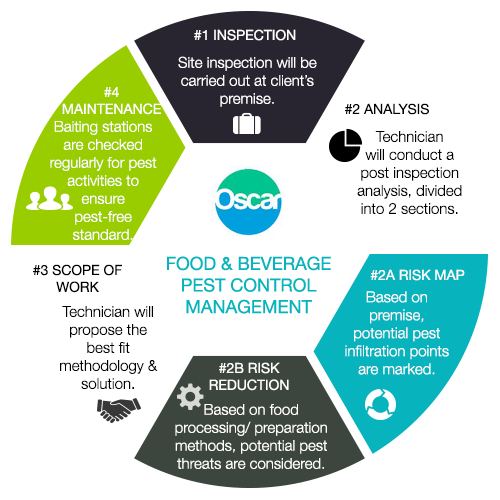Safeguarding Your Outdoor Haven: Efficient Techniques For Maintaining Rats At Bay
Safeguarding Your Outdoor Haven: Efficient Techniques For Maintaining Rats At Bay
Blog Article
Write- https://howmuchdoessimonkeyscharg62840.blogitright.com/26688289/pests-in-the-home-a-guide-to-health-hazards-and-how-to-avoid-them Developed By-Salinas Bernard
Did you understand that rodents can press through openings as tiny as a quarter? Think of the ramifications for your outside room. From nibbling on plants to nesting in cozy edges, these parasites can wreak havoc if given the possibility. However fear not, there are sensible strategies you can utilize to keep your yard rodent-free. By taking straightforward actions to secure entrance points and keep a clean atmosphere, you can create a fortress against undesirable furry visitors. So, are you all set to safeguard your exterior sanctuary from these pesky intruders?
Identify Entrance Points
To successfully rodent-proof your exterior room, start by pinpointing possible entrance points. Check your yard for any type of voids or openings that rats can make use of to access. Check areas such as voids under doors, holes in the walls, or openings around utility infiltrations. Remember that pet friendly ant killer for inside can squeeze via holes as tiny as a dime, so be extensive in your exam.
Focus on areas where utilities enter your home, such as where pipes, cords, or wires get in the structure. Seal any kind of spaces around these access points with materials like steel woollen or caulk. Additionally, check for any cracks in the structure or spaces in the siding that can function as entrance points for rats.
Pay close attention to areas where greenery satisfies your home, as thick plants can give hiding areas and simple gain access to for rodents. Trim back https://indianexpress.com/article/trending/trending-globally/firefighters-in-the-us-rescue-wild-animal-stuck-in-a-tree-8579631/ of overhanging branches or bushes that could be used as bridges to your residence. By identifying and sealing these access factors, you can substantially decrease the chances of rats attacking your outdoor room.
Implement Exclusion Measures
Evaluating and sealing entry points is the first step in rodent-proofing your outdoor space; currently you'll take action by carrying out exemption procedures.
Begin by setting up door sweeps on all exterior doors to prevent rodents from squeezing with voids. Seal cracks and gaps with weather-resistant sealer, concentrating on areas where energy pipes enter your home.
Use cable mesh to cover vents and chimneys, guaranteeing they're firmly attached. Cut tree branches and plants away from your house to remove possible bridges for rodents to access your roofing.
Furthermore, consider setting up metal blinking around the base of your home to stop burrowing. Store fire wood a minimum of 18 inches off the ground and far from your house.
Maintain garbage in tightly secured containers, and promptly clean up any splashed birdseed or pet food. By executing these exclusion procedures, you can considerably minimize the probability of rodents attacking your outside space.
Maintain Cleanliness and Trimmed Landscaping
Ensure your exterior area remains clean and your landscape design is frequently trimmed to deter rats from discovering harborage or food resources. Keeping your backyard tidy is key to lessening destinations for rats. Remove roach control of particles, mess, or unused things that could function as concealing spots for these pests. Rodents are attracted to locations with easy access to food and sanctuary, so by keeping cleanliness, you make your residential or commercial property less attractive to them.
Consistently cutting your landscaping is also essential in rodent-proofing your exterior area. Overgrown greenery offers rats with sufficient hiding spots and prospective nesting websites. By maintaining your lawn mowed, bushes trimmed, and trees pruned, you remove potential habitats for rodents. In addition, cut landscape design makes it harder for rats to access your home as they choose areas with ample coverage for defense.
Conclusion
Finally, by making the effort to rodent-proof your outside space, you can make certain a pest-free backyard for many years to come. Keep in mind to routinely evaluate for access points, carry out exemption procedures, and keep your backyard tidy and properly maintained.
With these simple methods in position, you can delight in a relaxed and rodent-free exterior environment. So, do not delay - start rodent-proofing today and say goodbye to unwanted pests in your lawn!
